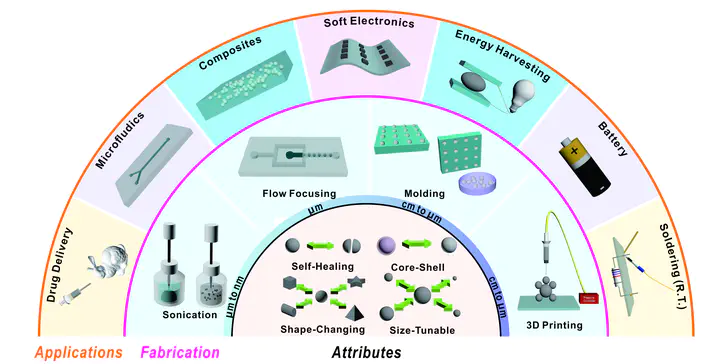Attributes, Fabrication, and Applications of Gallium-Based Liquid Metal Particles
Advanced Science 2020

Abstract
This work discusses the attributes, fabrication methods, and applications of gallium-based liquid metal particles. Gallium-based liquid metals combine metallic and fluidic properties at room temperature. Unlike mercury, which is toxic and has a finite vapor pressure, gallium possesses low toxicity and effectively zero vapor pressure at room temperature, which makes it amenable to many applications. A variety of fabrication methods produce liquid metal particles with variable sizes, ranging from nm to mm (which is the upper limit set by the capillary length). The liquid nature of gallium enables fabrication methods—such as microfluidics and sonication—that are not possible with solid materials. Gallium-based liquid metal particles possess several notable attributes, including a metal–metal oxide (liquid–solid) core–shell structure as well as the ability to self-heal, merge, and change shape. They also have unusual phase behavior that depends on the size of the particles. The particles have no known commercial applications, but they show promise for drug delivery, soft electronics, microfluidics, catalysis, batteries, energy harvesting, and composites. Existing challenges and future opportunities are discussed herein.